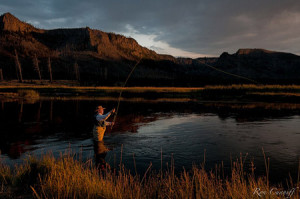
The next time you’re enjoying the great outdoors, take a moment to thank the Land and Water Conservation Fund (LWCF). Given that this fund has protected land in every U.S. state — including such iconic recreation areas as Grand Canyon National Park — and supports more than 41,000 state and local park projects, chances are good there’s a park near you that has benefited from the program.
This important fund was created by Congress in 1965 in order for natural areas, historical sites and forests to be obtained and safely maintained for our national heritage and to provide recreational opportunities throughout the country. Recently, however, the LWCF has been facing threats of cuts. The worst of these include an attempt within a recent House Appropriations Committee bill proposal to eliminate funding to this vital conservation program altogether. Thankfully, this draft did not make it past the committee, but the LWCF is not out of the woods yet.
So, why the push to limit funding for this important program? The reductions have been proposed as a way to alleviate the national debt. Tough times call for tough measures, right? There’s just one problem with that line of reasoning: The LWCF isn’t funded by taxpayer dollars. It’s financed by revenues from offshore oil and gas drilling in federal waters. Although the annual appropriation should be around $900 million from these offshore revenues, the appropriated funding has never come anywhere near that number as funds are repeatedly diverted to other areas.

And that’s the main problem that LWCF is facing — reallocation of its funds for other conservation programs, especially for National Park Service backlog. The National Park Service has an ever increasing debt and badly needs funding for maintenance backlog. The LWCF would only help them acquire more land, which would seem to exacerbate maintenance problems. Or so the story goes, whereas in reality, more land will actually alleviate the visitor stress that some parks — like Oregon Caves National Monument — are under. Rather than reallocating from one to another, we want to see Congress work on ways to appropriately fund all of these vital conservation programs, such as through usage fees, permanent endowments or public/private fund matching projects.
Thankfully, the Senate appropriations have been much friendlier to conservation program funding. Senator Baucus (D-MT) has proposed a bill called the Land and Water Conservation Authorization and Funding Act of 2013 (S. 338) that would permanently protect this impactful program. With the role this fund plays in protecting our natural forested areas and providing safe recreational areas throughout the country and as a member of the LWCF Coalition, we hope that Congress will make more favorable decisions when they come back from recess.
But we don’t have to just sit back and hope. We can tell Congress how we feel. Write to the Senate to ask them to pass S. 338 to protect the LWCF and the forests and natural land that it safeguards. Get started with our pre-written letter.
To learn more about the LWCF, its history and what work we are doing to protect this program, please visit the LWCF Coalition website.
